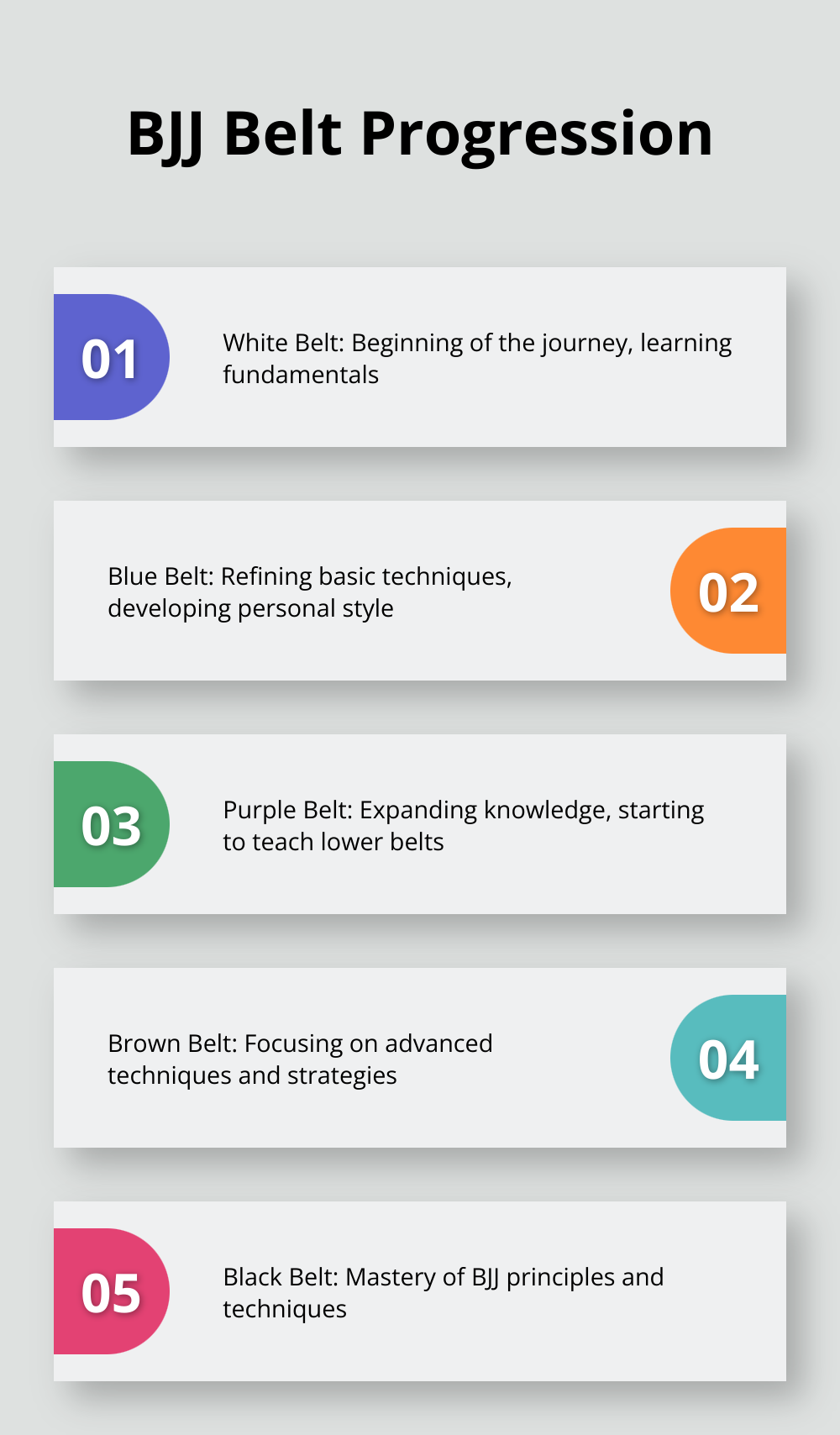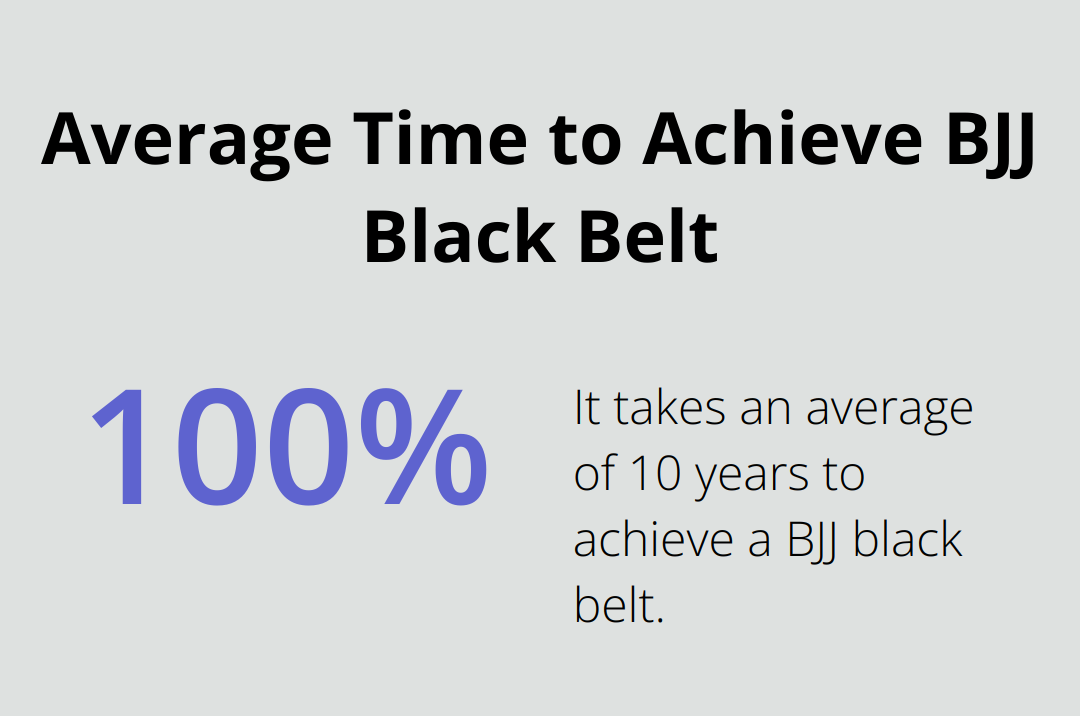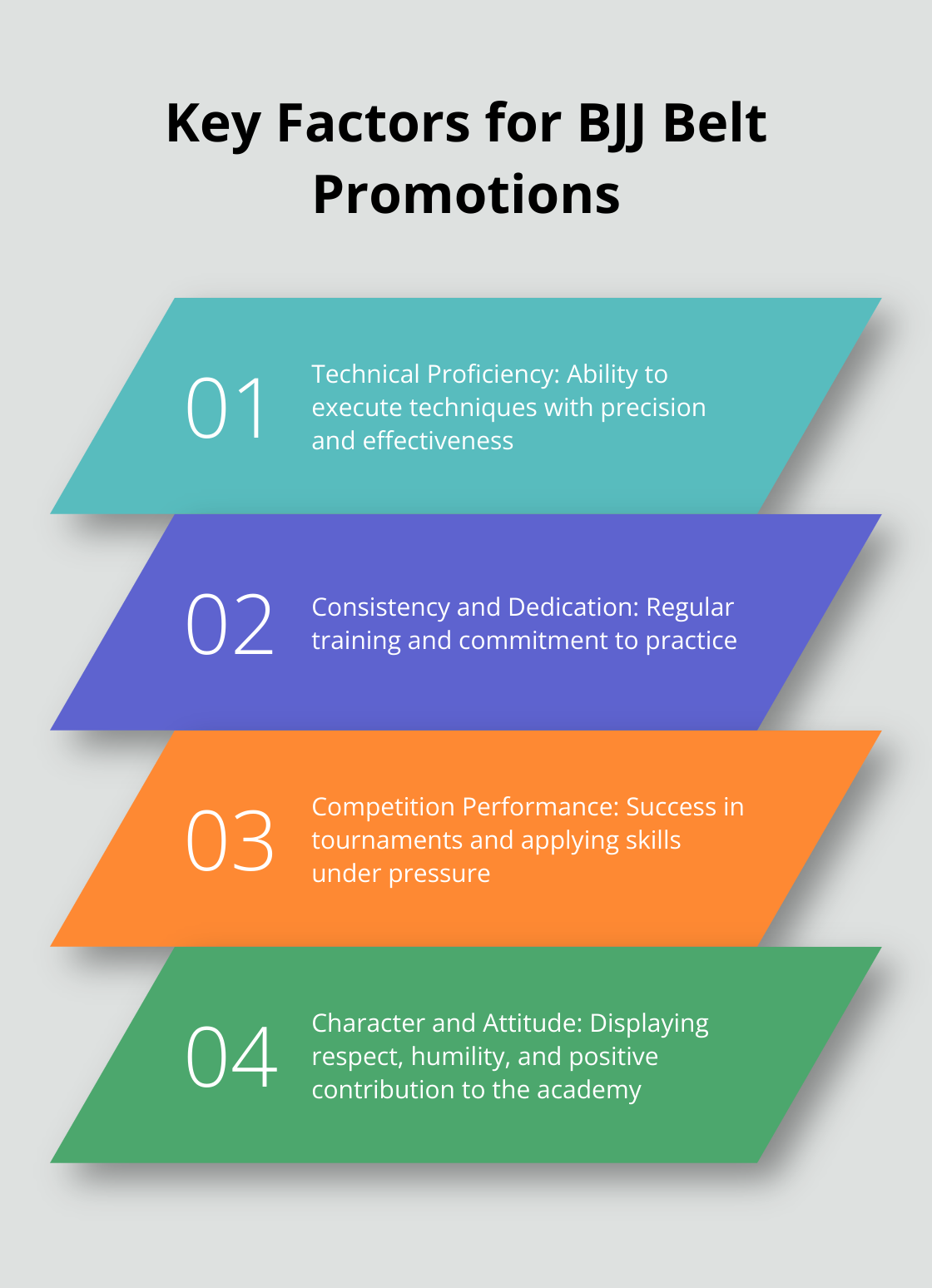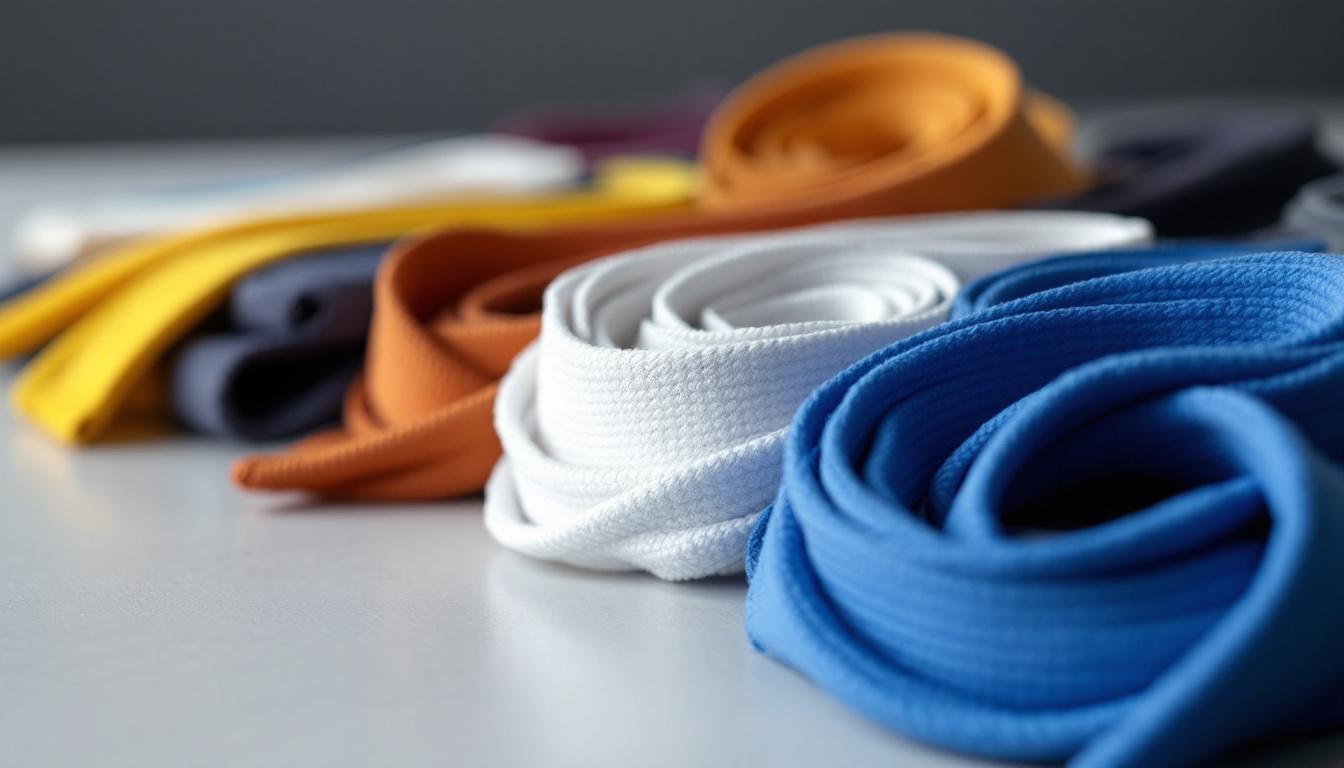At Jiu jitsu, we understand the importance of the ranking system in Brazilian Jiu-Jitsu. The journey through Jiu Jitsu belt ranks is a testament to a practitioner’s skill, dedication, and character.
This guide will walk you through the intricacies of BJJ’s belt system, promotion criteria, and strategies for advancement. Whether you’re a beginner or an experienced grappler, you’ll find valuable insights to help you progress on your BJJ journey.
What Are the BJJ Belt Colors and Their Significance?
The Rainbow of BJJ Belts
Brazilian Jiu-Jitsu (BJJ) uses a progression of five main belt colors: white, blue, purple, brown, and black. Each color represents a significant milestone in a practitioner’s journey. The Brazilian jiu-jitsu ranking system signifies a practitioner’s increasing level of technical knowledge and practical skill within the art. White belts start as beginners, while black belts are considered experts with years of experience.

Time and Effort: The Path to Promotion
The time spent at each belt level varies widely. On average, it takes about 10 years to achieve a black belt. However, individual progress depends on factors like training frequency, natural aptitude, and competition performance. Dedicated students can earn their blue belt in 1-2 years, while others might take 3-4 years.

Stripes: Milestones Within Milestones
Each belt can have up to four stripes, which mark progress within that rank. Instructors award these stripes for consistent training, skill improvement, and sometimes competition success. Stripes serve as motivation for students and acknowledge their hard work between major promotions.
White Belt: The Beginning of the Journey
The white belt represents the start of a BJJ practitioner’s journey. At this stage, students learn fundamental techniques, basic positions, and the core principles of BJJ. The duration at white belt varies (typically 1-2 years), depending on training frequency and individual progress.
Blue to Black: The Progression
After white, practitioners advance through blue, purple, and brown belts before reaching the coveted black belt. Each belt level brings new challenges and expectations:
- Blue Belt: Students refine basic techniques and start developing their own style.
- Purple Belt: Practitioners expand their knowledge and start teaching lower belts.
- Brown Belt: Advanced techniques and strategies become the focus.
- Black Belt: Mastery of BJJ principles and techniques is expected.
The BJJ belt system is more than just colors and stripes. It reflects a practitioner’s journey, filled with challenges, victories, and continuous learning. As you progress through the ranks, you’ll find that each promotion opens up new areas of study and growth in your BJJ practice.
What Determines BJJ Belt Promotions?
At Souza Grappling Co., we often receive questions about the criteria for belt promotions in Brazilian Jiu-Jitsu. While no universal standard exists, several key factors influence when a practitioner advances to the next belt level.

Technical Proficiency and Skill Level
Technical proficiency forms the foundation of BJJ progression. Instructors evaluate a student’s ability to execute techniques with precision and effectiveness. This assessment includes not only performing moves in isolation but also applying them in live sparring situations. A blue belt candidate should demonstrate a solid grasp of fundamental techniques (such as guard passes, submissions from dominant positions, and basic escapes).
As practitioners advance, the expectations for technical proficiency increase. A purple belt should exhibit a deeper understanding of BJJ concepts and the ability to chain techniques together seamlessly. Brown belts must possess a comprehensive knowledge of BJJ techniques and strategies, often developing their own unique style or specializations.
Consistency and Dedication
Regular training proves crucial for advancement in BJJ. Consistent attendance and dedication to practice indicate a student’s commitment to the art. Many academies (including Souza Grappling Co.) track attendance and consider it when evaluating students for promotion.
Dedication extends beyond mere attendance. It encompasses the quality of training, the effort invested in each session, and the willingness to push oneself outside of comfort zones. Students who consistently challenge themselves, seek out tough sparring partners, and actively work on improving their weaknesses tend to progress faster through the ranks.
Competition Performance
While not mandatory, competition performance can significantly influence belt promotions. Success in tournaments demonstrates a practitioner’s ability to apply their skills under pressure against unfamiliar opponents. Instructors consider not just medal counts, but also how a student performs, the techniques they use, and their overall strategy.
For example, a white belt who consistently medals in local tournaments might receive consideration for blue belt promotion sooner than someone who doesn’t compete. Similarly, a purple belt with notable achievements in high-level competitions might catch their instructor’s eye for brown belt consideration.
Character and Attitude
BJJ shapes character beyond physical techniques. Instructors closely observe a student’s attitude both on and off the mat. Qualities like respect, humility, and a willingness to help others hold high value in the BJJ community.
A practitioner who displays good sportsmanship, supports their training partners, and contributes positively to the academy’s atmosphere increases their chances of promotion. Conversely, ego-driven or disrespectful behavior can hinder advancement, regardless of technical skill.
At Souza Grappling Co., we emphasize the importance of these qualities in our training programs. We believe that developing strong character alongside technical skills creates well-rounded martial artists who truly embody the spirit of BJJ.
Understanding these criteria helps practitioners focus their efforts and set realistic goals for advancement. However, the journey in BJJ transcends belt colors. The next chapter explores strategies to progress through the ranks while maintaining a balanced approach to training and personal growth.
How to Advance Through BJJ Ranks
Commit to Consistent Training
Consistent Training is crucial for progress in BJJ. Training more frequently can help to build up the necessary muscle conditioning and reduce the risk of injury. Additionally, training BJJ once a week may not be sufficient for significant improvement. Set realistic goals and prioritize quality over quantity in your training sessions.
Diversify Your Training Partners
Rolling with various partners exposes you to different body types, strengths, and techniques. This diversity challenges you to adapt your game and solve new problems. Rotate partners during class and open mat sessions. Don’t avoid training with higher belts – their experience can significantly accelerate your learning curve.
Compete Regularly
Competition pushes you out of your comfort zone and accelerates growth. Start with local tournaments to gain experience, then progress to larger events. Try to compete at least twice a year. The intensity of competition training and the pressure of real matches will sharpen your skills faster than regular training alone.
Expand Your Knowledge Base
Attend seminars to gain different perspectives and techniques from top-level practitioners. Try to participate in at least one major seminar annually. Additionally, cross-train in complementary martial arts (e.g., wrestling or judo) to round out your skill set. Many successful BJJ practitioners credit cross-training for giving them a competitive edge.
Seek and Apply Feedback
After each training session or competition, ask your instructor or higher-ranked training partners for specific feedback. Inquire about areas that need improvement and techniques you execute well. Keep a BJJ journal to track this feedback and your progress. Review it regularly to address your weaknesses and build on your strengths.
Final Thoughts
The journey through Jiu Jitsu belt ranks transforms practitioners physically, mentally, and personally. Each promotion represents countless hours of training, challenges overcome, and skills refined. The color of your belt reflects progress, not the ultimate goal. The most rewarding aspects of BJJ come from daily training, camaraderie with partners, and personal victories on and off the mat.
We encourage practitioners to focus on consistent improvement rather than fixate on promotions. Approach each training session as an opportunity to grow, stay humble, and embrace the learning process. Every black belt started as a white belt who persevered. This mindset ensures belt promotions occur naturally as a result of dedication and hard work.
Souza Grappling Co. supports your growth in Brazilian Jiu-Jitsu. Our state-of-the-art facility offers expert instruction, a supportive community, and various classes to help you achieve your goals. Continue to push forward, commit to your practice, and enjoy every step of this incredible martial arts journey.




